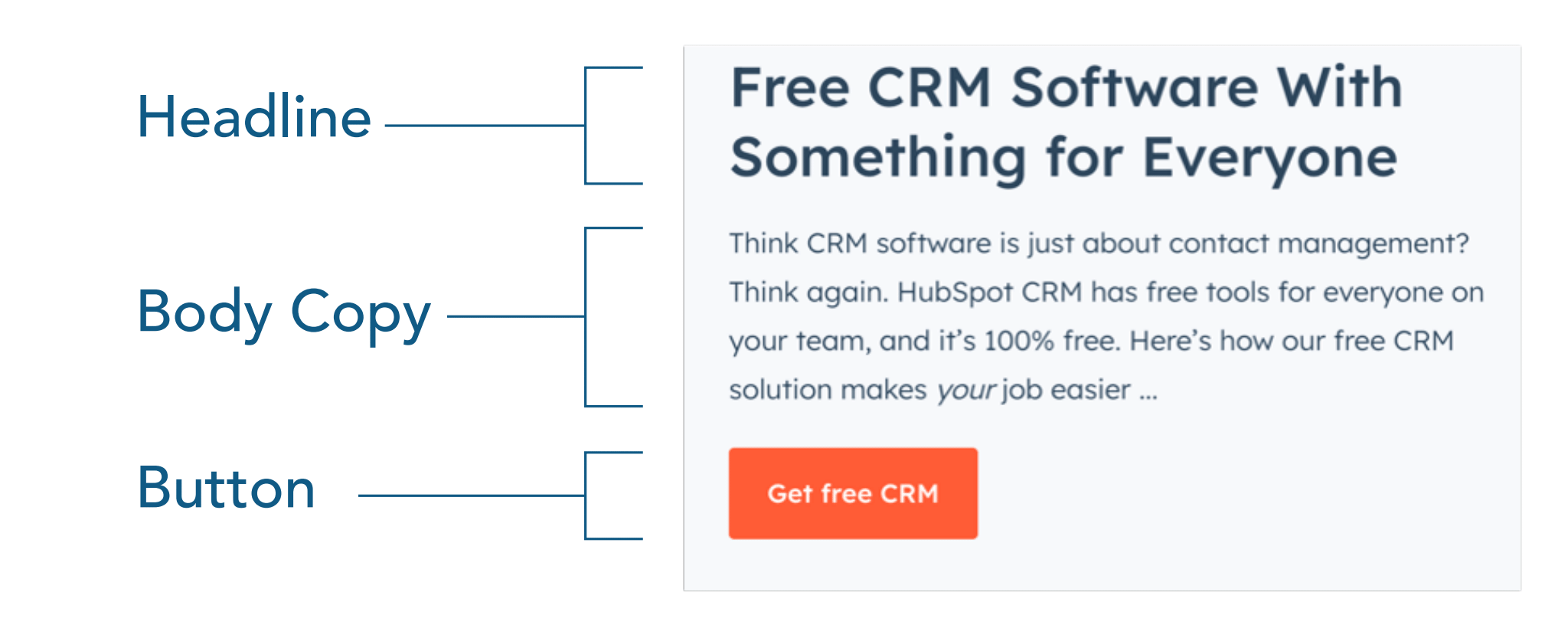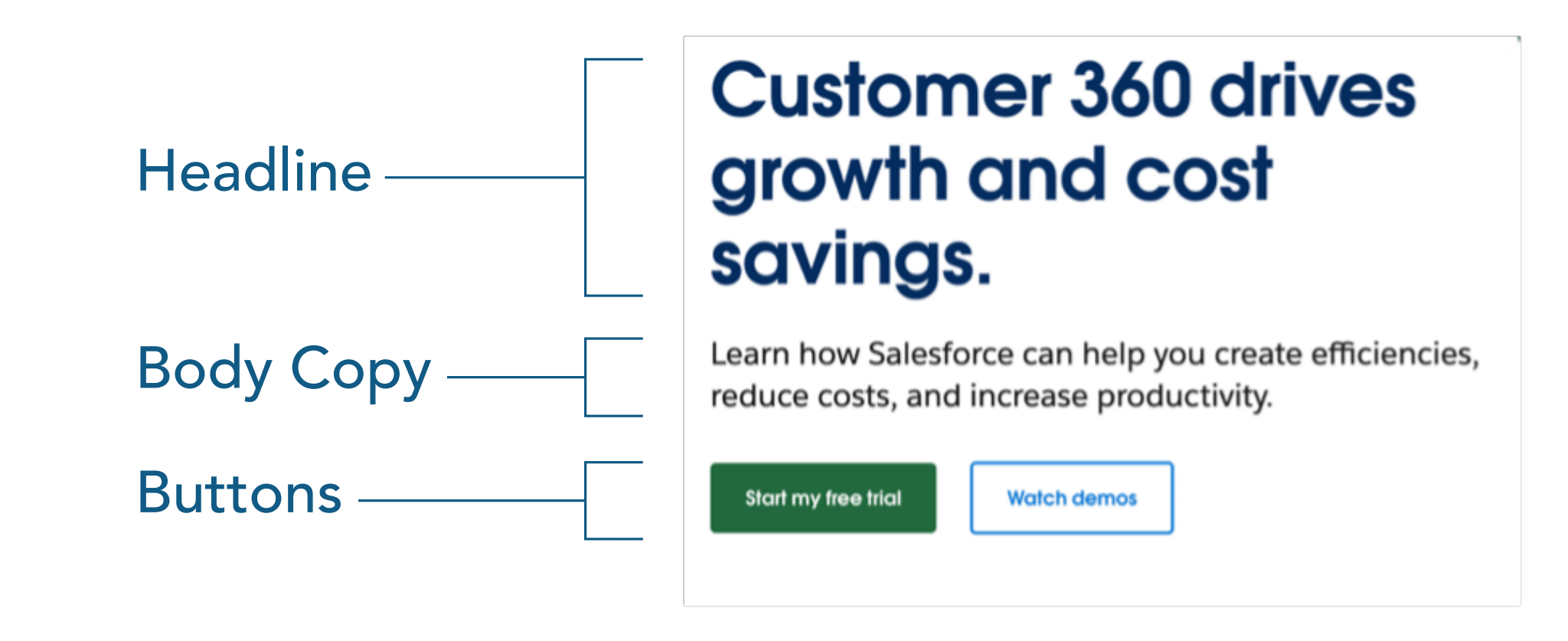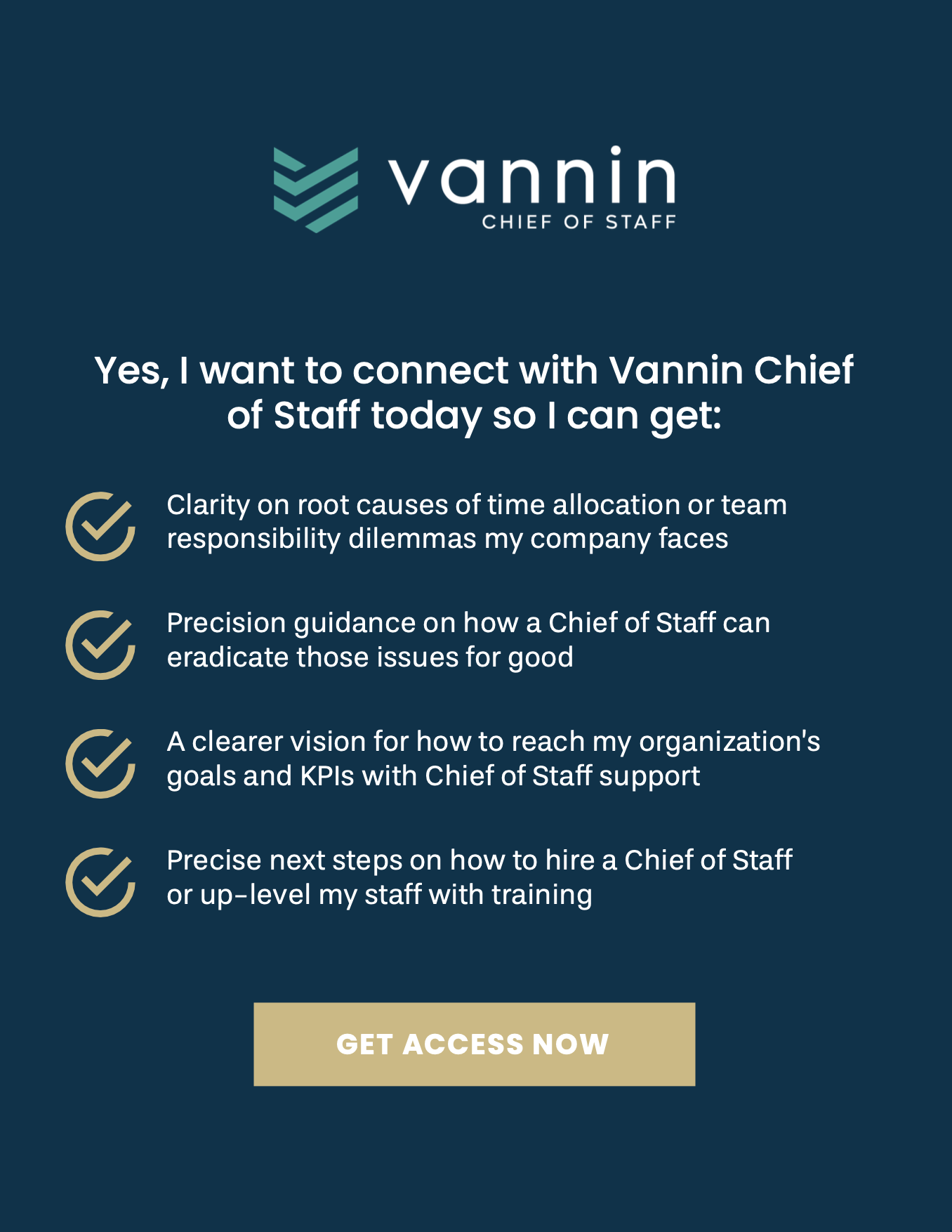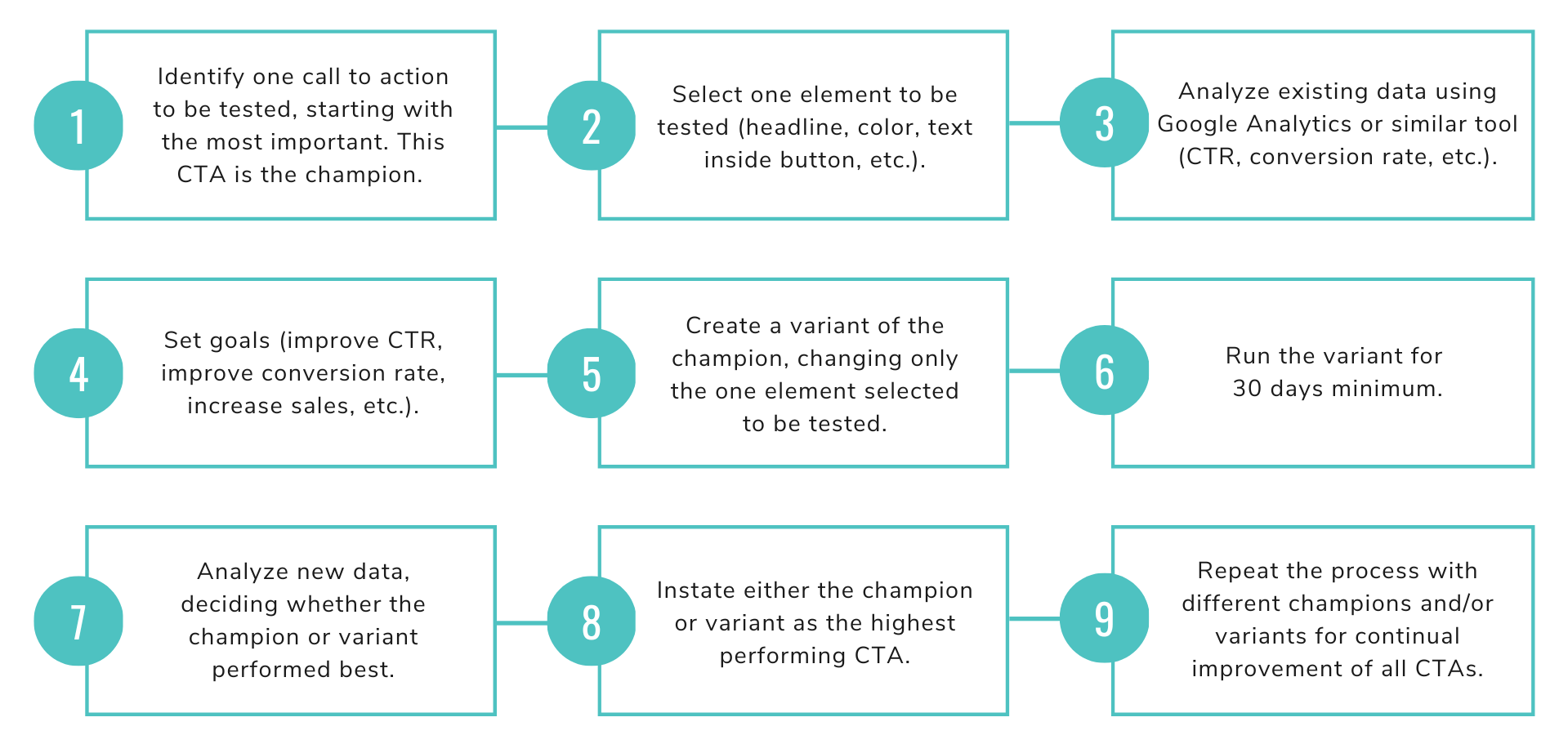by Wendy O’Donovan Phillips
Share

People take action when we ask them to take action.
Why is it so hard to get that ask right?
We surveyed 100 website development and online marketing experts and to uncover precise best practices for business-to-business (B2B) marketing calls to action that encourage visitors to take the next right step in getting the services they need from professional services organizations like accounting firms, SAAS companies, staffing firms and fractional services companies. In other words, we uncovered calls to action (CTA) that actually convert leads to clients. Here’s what we found:
The Clear Call to Action Model
Analysis of data from website development and online marketing experts nationwide gave way to a clear model for the development of strong calls to action. We provide it here in the form of a manifesto you can apply every time your team creates marketing materials.
The Industry Insiders’ Approach to Format
Our study revealed a particularly simple format for website calls to action that produce the highest click through rates. We illustrate the format.
The Call to Action for Connection
Check your website’s Contact or Connect page. Is what you see there compelling enough to get a visitor to call or fill out a form? If not, check out what our experts recommend as the call to action most likely to inspire connection.
The Process for A/B Testing
A/B testing website calls to action is essential to optimizing click-through rates over time, yet it can be time intensive and tedious. We offer a standard operating procedure you can use for A/B testing.
Insights Beyond the Manifesto
Here, we publish insights from the individual website development and online marketing experts who participated in our study. If you are ready for the advanced course, this section is for you.
If we expect people to take action, we must clearly call them to action. Herein is the manifesto of The Clear Call to Action (CTA) Model as shown by trends from our study of 100 website development and online marketing experts nationwide:
- All CTA buttons shall start with an action word, or verb, like “Get,” “Download” or “Schedule” for optimum click-through rate.
- Downloadable assets shall bear the CTA “Download now – it’s free.”
- Content marketing signups shall bear the CTA “Subscribe.”
- The contact CTA shall be “Schedule a demo now” or “Schedule a consultation now.” 5. Website calls to action shall appear “above the fold,” or before the visitor must scroll, for optimum click-through rate.
- Website buttons shall be designed in a contrasting color to the content or web page for optimum click-through rate.
- Supporting copy appearing above or near the website call-to-action button shall be written in no more than 3 sentences, each about 5 words long.
- Text appearing inside the website call-to-action button shall be written in no more than 5 words. 9. Call-to-action buttons on mobile devices shall be larger than desktop call-to-action buttons for optimum click-through rate.
- A testimonial quote shall be placed near the website call-to-action button to increase click-through rates.
- Website call-to-action buttons shall be rounded, not square.
- Calls to action shall follow the Z formation along which a website visitor’s eyes travel.
To ensure whole-team compliance, document a standard operating procedure based upon this manifesto, train your team, celebrate wins toward achieving the desired outcomes and keep your team accountable for ongoing updates and improvements. For support, connect with us.
THE INDUSTRY INSIDERS’ APPROACH TO FORMAT
Our industry insiders indicated a straightforward format for each call to action: headline, body copy and one or two buttons. Each should be laid out like these examples: “Wait,” you might be thinking. “These calls to action are for services that are not like mine.” True, and yet the format works for any service based industry:
Example 1:

Example 2:

Example 3:

THE CALL TO ACTION FOR CONNECTION
Here are detailed instructions on how to develop the call to action our experts indicated is most likely to inspire connection:
First, get the reader’s attention with an inviting headline. For example, “Are you ready for dependable accounting support you can trust?”
Then, add body copy underneath to tee up your upcoming values list. For example, “Yes, I want a complimentary analysis of my current accounting so I can get:”
The value list includes three to four bullet points articulating the value the person will get from taking action. (This is not the value proposition for moving to one of your communities or investing in care with you. That value proposition should be articulated on the Home and other main web pages before they reach this one. This is the value of simply taking the next right step. Here is a list of example value bullets that would follow the phrase “…so I can get”:
✅ Clarity on the root causes of current accounting issues or questions we face
✅ Research and industry intel that will help eradicate these issues for good
✅ A clearer vision for reaching the organization’s desired future accounting solution
✅ A free initial plan to improve your organization’s accounting now
Finally, add a short form with a button at the end that calls them to action. For example, “Schedule my free session.” When it all comes together, it looks like this:

THE PROCESS FOR A/B TESTING CALLS TO ACTION
A/B testing allows your team to definitively determine which elements of a given call to action yield the achievement of which goals. For example, the call-to-action headline “Are you ready for dependable accounting team?” may yield a 4.23% click-through rate (CTR) while “Are you ready for accounting support you can trust?” may only yield a 2.64% CTR.
Here is a process for A/B testing website calls to action for continual improvement over time:

Beyond calls to action, A/B testing is best applied to the headlines and body copy on each web page, images and video appearing throughout the website, service descriptions on the website, subject lines of email campaigns and various elements of landing pages and content marketing efforts.
Website development and online marketing experts across the nation consider A/B testing one of the best strategies for improving website conversions and overall outcomes from nurture marketing efforts.
INSIGHTS BEYOND THE MANIFESTO
In surveying 100 website development and online marketing experts, we gleaned added individual insights outlined here.
Create Urgency
Use time-oriented wording in or near calls to action to encourage visitors to act now. For example, “Only 2 Appointments Left!” proximate to the call to action “Schedule my free session.”
Optimize the Experience
For calls to action to work optimally, the designs of the user experience and user interface (UX/ UI), or look, feel and functionality of the entire site, must be in optimal working order at all times. Websites older than five years typically require an entirely new platform for web design and interface to properly work.
Tell a Story with Photography
Photos should catch the reader’s eye. Use custom photography to share the story of your company’s brand promise, differentiators and culture.
Connect the Way They Prefer
Our team’s marketing automation experts suggest that in all contact forms, you provide a dropdown field that allows website visitors to select the method of communication that works best for them: email, text or phone call.
Apply Best Practices Across the Board
Apply similar best practices to calls to action on all media leading to the website: social media posts and ads, online ads, blog posts, content marketing emails, landing pages, etc.
Offer to Chat
Add a live chat solution to the website to further increase conversions. A recent study by our chat experts found that 8% to 13% of live-chat-generated leads convert to paying clients – a rate of three to five times the industry average.
Here’s to high web-visitor-to-client conversion for you and your organization!

Wendy O’Donovan Phillips
CEO, Big Buzz
Since 2007, Big Buzz® has helped Stage II to Stage III organizations systemize marketing to achieve growth goals. Founder and CEO Wendy O’Donovan Phillips is the author of two books available on Amazon, Kaboom and Flourish, multiple data-driven eBooks, has been published in McKnight’s, in Forbes, and has been quoted in The Washington Post, ABC News and Chicago Tribune. She has lectured dozens of professional organizations in front of audiences ranging in size from 25 to 6,000. She has been honored by the American Marketing Association for excellence in her field and has been named a Gold Key Award Winner by the Business Marketing Association. In her two-decades-long career, she has consulted with hundreds of organizations globally to support improved marketing clarity, strategies and outcomes. Get details: visit www.bigbuzzinc.com and follow Wendy.
